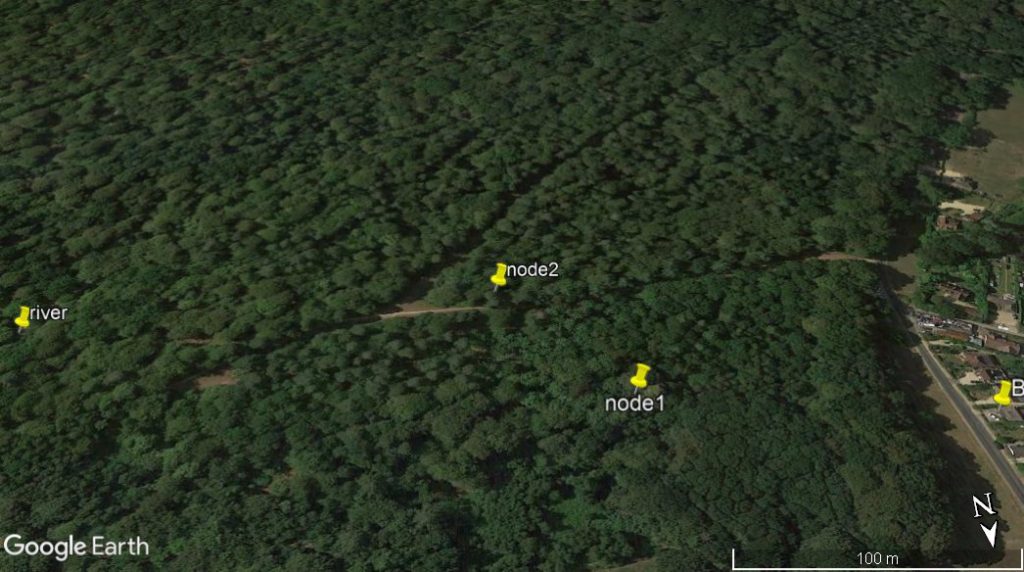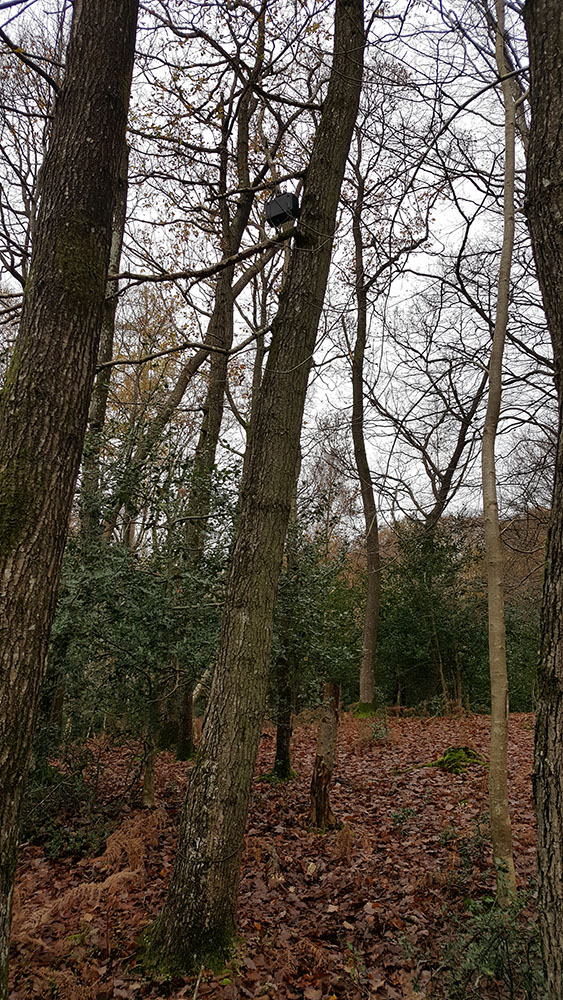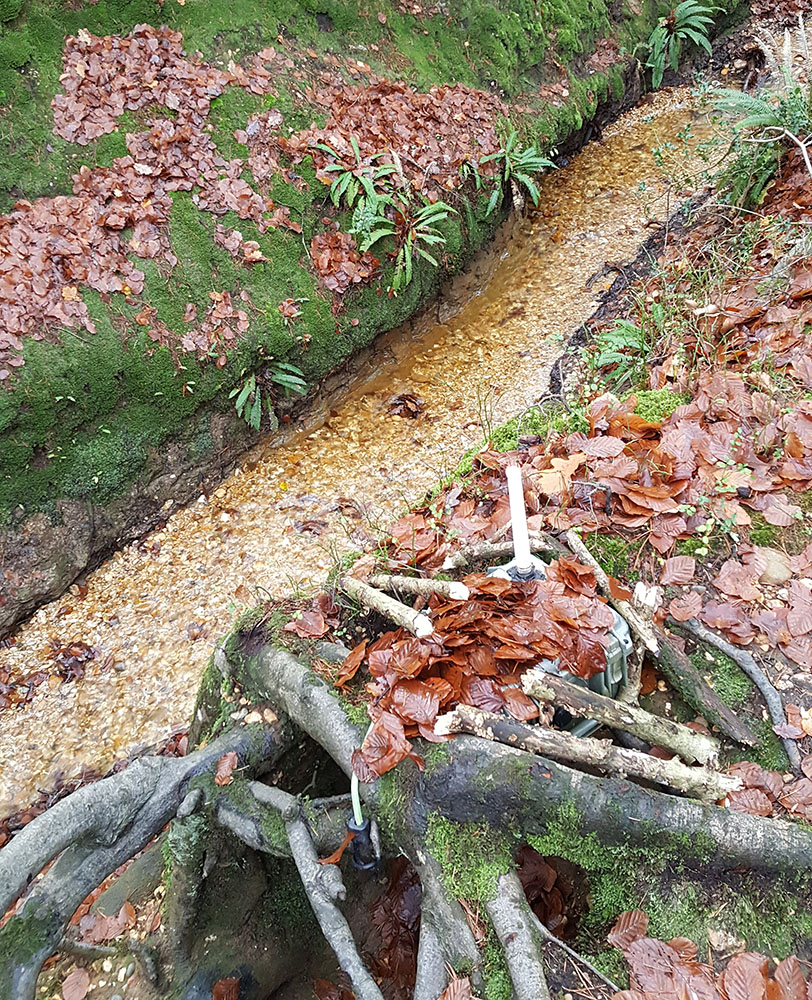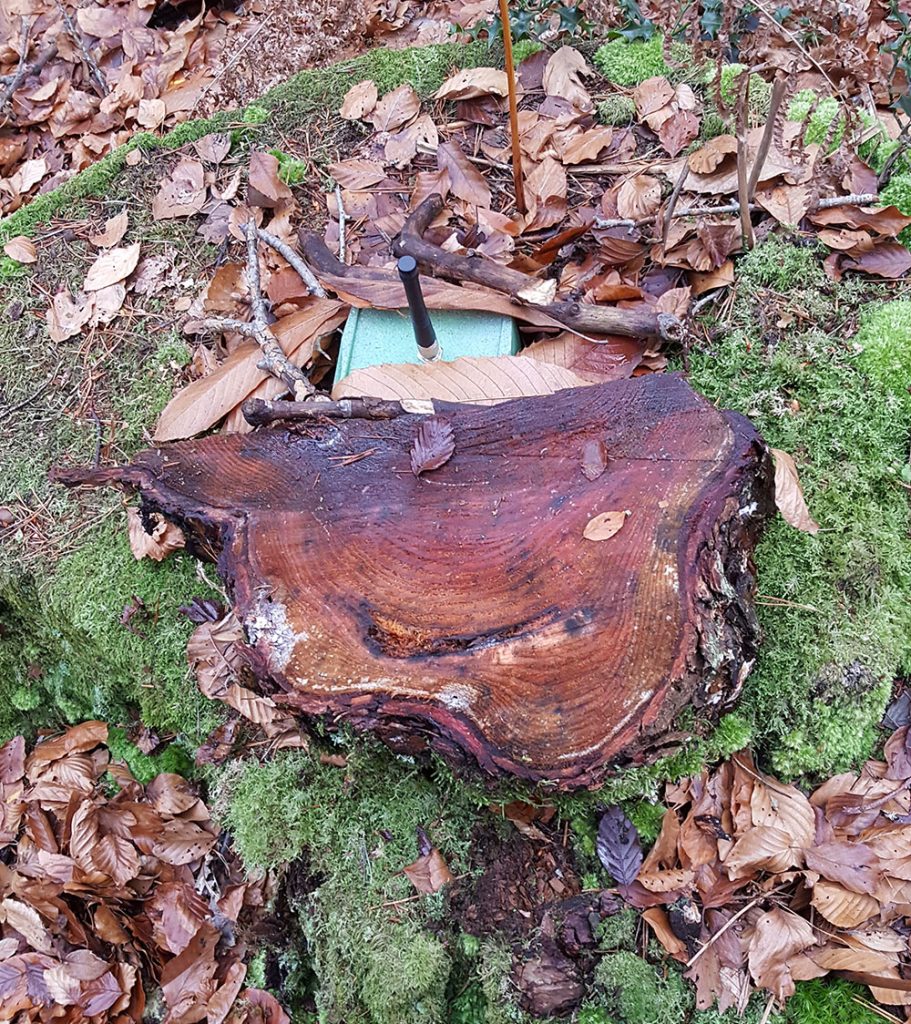To carry our local trials of IP-based sensor networks we have made a small test-bed in the New Forest. This allows easy access to try different hardware/software/techniques and there are a range of features such as streams and animals which could be investigated.
The sensor nodes are based on a design by an ECS student Sam Kendall, who also worked with us in an internship in 2020. It runs the RIOT-OS which provides the full IoT stack.






Conclusions
The typical range of the 868MHz radios was 150-200m in the forest. Groups of wet trees could reduce the signal by around 7dB so it is important to check each study site for connectivity. This type of radio can certainly be used in forests and may require extra nodes to fill in difficult coverage areas.
The speed of the links is sufficient for normal sensor readings but should be taken into account for long signals or images. Readings could be obtained in 0.1s one hop away – doubling with each hop.
The network allows normal Internet tools to be used to monitor and check it – as well as easy web-integration.
We did not use power saving modes but these extend the battery lifetime of each node to around a year on one 18650 lithium battery. We will also test real sensors in subsequent updates. Although these radio ranges are fairly low – even LoraWAN only manages around 500m – the same technologies can be used with 433MHz or 170MHz, which could be a useful future test to increase te maximum hop range.
This is a link to our AGU 2020 poster:
